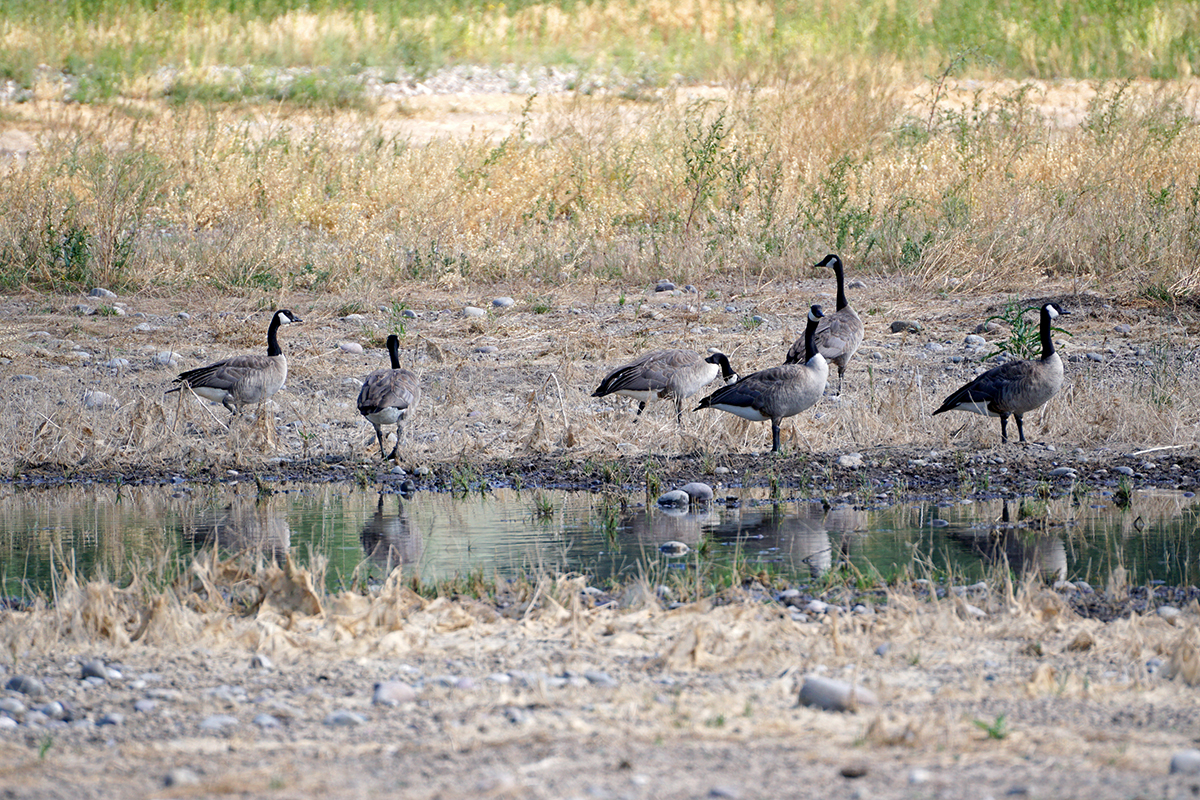Why Do Some Wyoming Wetlands Go Dry?
A wetland without water can be vital for sustaining waterfowl migrations
A wetland without water can be vital for sustaining waterfowl migrations

Have you ever suffered the disappointment of paying a summer visit to a brand-new Ducks Unlimited wetland project in your area of Wyoming only to find it's not holding water when you arrive? What happened? Why isn't it working?
The answer is very likely that it is functioning exactly as intended.
But what good is a wetland without water? Can we even call it a wetland? What purpose does it serve all summer?
The answer is it will be busy—very busy. It is growing the all-important, moist-soil plant vegetation that's required to support the nutritional needs of the southbound waterfowl migration happening the following fall. These plants thrive within wetlands and produce many seeds that waterfowl can consume and also provide the needed substrate for micro-invertebrates to thrive—both keys to a successful and healthy migration north and south each year.
Scientifically speaking, many of the Great Plains' natural wetlands are “ephemeral,” seasonal wetlands that have evolved to dry with Wyoming's arid summer, yet serve specific and important purposes for a specific landscape and its wildlife. Since wetlands are not very common across Wyoming (comprising 3.2 percent of land cover prior to settlement and just 2 percent today), those that do exist are all the more critical for waterfowl and other native and migrating species.
For the northward migration in the spring, the wetlands are often flooded from melting snow and spring precipitation and provide critical nourishment, both for the simple caloric needs of the arduous flight and also to supply the calcium and protein requirements for the hens' egg-building needs. The timing of the wetlands’ wet season coincides with the reproductive needs of many insects, mollusks and amphibians. A great number of invertebrates also utilize wetlands for their reproductive cycle, and it is their eggs, larvae and juvenile forms that provide many of those critical ingredients for duck egg construction.
When Wyoming's wetlands are relatively dry for the summer season, they will grow all the vegetation required to fuel the fall's southward migration, and in the fall when the wetlands refill, all the fresh, nutritious vegetation becomes available to both dabbling and diving ducks. A further benefit for hunters is a majority of DU's projects to improve Wyoming's wetlands help attract birds to the veritable smorgasbord.
Thus, if your visit to a wetland does not happen to coincide with its wet period, appreciate the lush growth that is occurring and recall that the water it once held has already played an important role in flood mitigation, recharging the local water table and filtering/purifying runoff from the site. Consider its additional critical role as well in both spring and fall waterfowl stopovers, and you may think of wetlands as one of nature's ultimate multi-taskers.
Ducks Unlimited uses cookies to enhance your browsing experience, optimize site functionality, analyze traffic, and deliver personalized advertising through third parties. By continuing to use this site, you agree to our use of cookies. View Privacy Policy